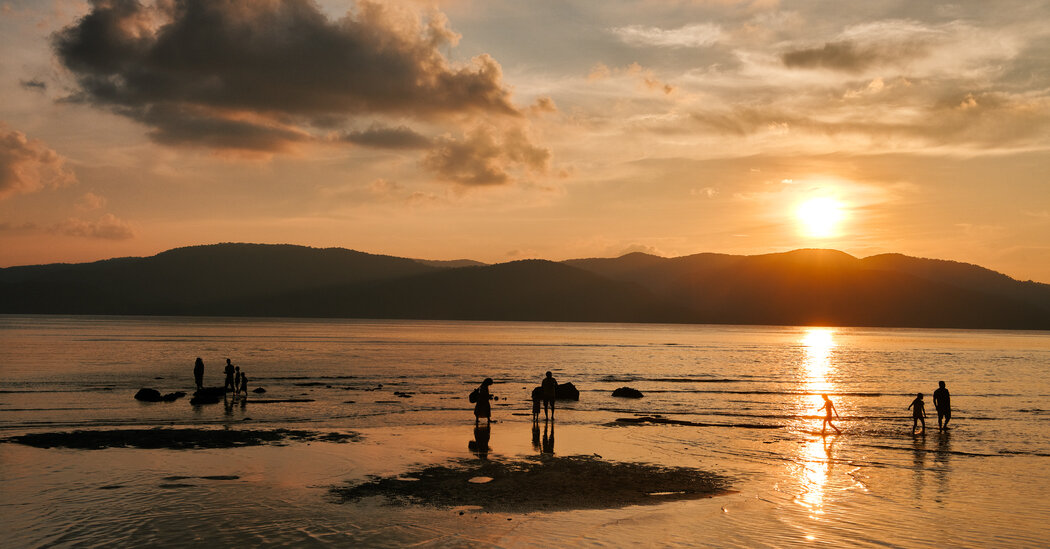
I’ve traveled to the Maldives, the Seychelles, the Caribbean, Thailand, Bali, the South Pacific and beaches up and down Africa’s coast. But this one, called Radha Nagar, after a Hindu goddess, was more beautiful than any other. I dove in. A few strokes later I was swimming in water above my head but still clear to the bottom — the perfect swimming beach, not too shallow, not too deep.
Perhaps the greatest view was not from the beach but of the beach. Treading water I gazed back at the jungle. It looked prehistoric. All that foliage — the towering mahua trees, the coconut palms, the pandanus bushes and so many other trees and plants I’ll never be able to name — blended into one towering wall of green that rose up from the edge of the land and captured the last rays of the sinking sun. The tree bark glowed almost orange. I was overwhelmed with one intoxicating sensation: I am far from home.
That night, after a dinner of fresh shrimp and fish, accompanied by a stack of soft rotis and washed down with a lime soda, I climbed into bed in my bungalow. As I drifted off, a soft rain began to fall. I could hear the cicadas and the bats, the rain washing through the trees. I woke up 12 hours later.
The next few days I explored Havelock’s hiking spots and beaches, all excellent though none quite as stunning as Radha Nagar. One afternoon I went to the settler family’s house for lunch, which Barefoot arranged, and we sat on the floor and talked.
As Mr. Sikdar, dressed in flawless white, told us about the rapid development on the island, his wife laid out the meal: eggs soaked in coconut milk, stewed eggplant, fish marinated with mustard oil and spices and wrapped in plantain leaves and then cooked over a low flame, and sweet vermicelli pudding. We ate with our hands, and I left stuffed.





